Stage
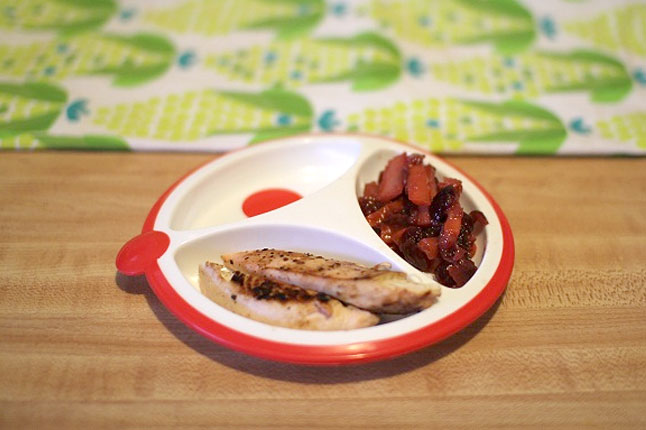
This well rounded recipe is a great source of protein along with vitamins and minerals. Not only do cranberries go great with chicken, but this healthy dipping sauce is a simple and flavorful way to incorporate additional vegetables into your child’s diet. Cranberries feature vitamin C, plus polyphenols, which collectively help to strengthen and maintain the immune and cardiovascular systems along with promoting brain development. For an overview of essential vitamins and minerals your child needs, check out our Nutrient Chart.
Depending on the toddler and adult size portions, this recipe will serve 4-6.
Here is what you will need to make this recipe:

- 1 lbs boneless skinless chicken breasts, cut into strips
- 2 cup cranberry juice
- 1/4 cup dried cranberries
- 1 tsp grated fresh ginger
- 1 tbsp butter
- 2 tbsp finely diced shallots
- 1 clove minced garlic
- 1/4 cup carrots, peeled and cut into strips
- 1/4 cup parsnips, peeled and cut into strips
- salt and pepper to taste


Stir cranberry juice, cranberries, ginger and garlic in a large bowl and add chicken strips, cover and marinate in refrigerator 1 to 2 hours.
Note* If using chicken breasts or tenders, cut chicken into strips.

While the chicken marinates, chop shallots.

Peel and chop carrots and parsnips.
Note* I cut both into strips, but I would recommend you chop them into smaller pieces for easier dipping.

Remove chicken from marinade, set marinade aside. Salt and pepper chicken to taste.

Melt butter in a medium saucepan. Add shallots and saute over medium heat until transparent.

Add saved marinade, bring to a boil, uncovered. Reduce heat and simmer 15 minutes, stirring occasionally, until sauce is reduced by half.

Add parsnips and carrots. Simmer the sauce for 5 minutes or until the veggies are tender.

Grill chicken over medium-high heat 4 to 5 minutes per side or chicken reaches internal temperature of 165 degrees F.
Note* The chicken will have a pink tint from the marinade.

Serve with sauce on top or for happy fingers to dip.
Store the chicken and cranberry sauce separately in the refrigerator and reheat before serving.
Stage
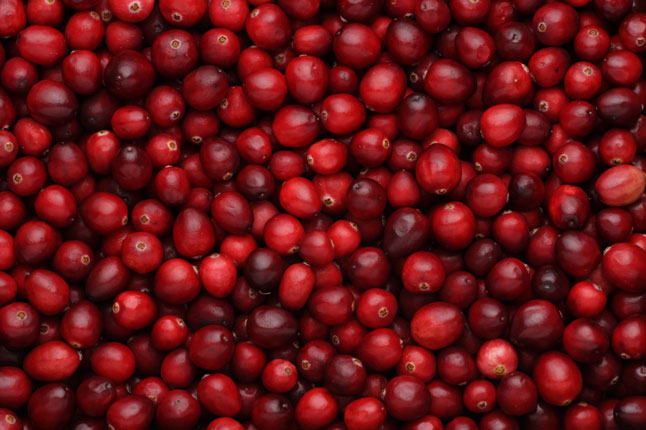
Small but mighty. Berry Big Benefits For Babies.
The star of many Holiday Season meals, the cranberry is loved by babies and their moms year ‘round as a tasteful, healthy delight. Loaded with nutritious vitamins and minerals, cranberries feature vitamin C, plus polyphenols, which collectively help to strengthen and maintain the immune and cardiovascular systems, promote brain development, and help to prevent cancer and heart disease. Cranberries tend to be more acidic than many berries but most pediatricians encourage introducing this fruit to your little one beginning at eight months. Start with small portions to make sure cranberries settle well with your baby’s stomach – he or she will love the taste!
Not just for the Holidays.
The perfect mixing ingredient, cranberries go well with applesauce, yogurt, bananas, peaches and more, and are also a great side dish with chicken, pork, and other lean meats. Be sure to never serve cranberries raw – bake them or stew them in a saucepan and then simmer them in water. You may also bring water to a boil, add cranberries, then lower the heat until the cranberries “pop” after 15 minutes. Finally, cranberries are great by themselves when served as a puree. Best of all, cranberries may be frozen and will keep for up to 10 months, so your baby can enjoy this nutritious favorite all year long! Be sure to check out great cranberry recipes listed in the link below.
Interesting cranberry facts.
The cranberry is one of only a few fruits native to North America. Dutch and German settlers originally called the fruit a “crane berry” due to its resemblance on the vine to the head and bill of a crane. Native Americans mixed deer meat with cranberries to make “pemmican”, a long-lasting cake that helped them survive harsh winters. Early American sailors depended on the cranberry’s abundance of vitamin C to help prevent scurvy. Americans consume nearly 400 million pounds of cranberries each year with about 20% of this number prepared during Thanksgiving week alone!
Try one of these delicious cranberry recipes the next time you’re looking for a new recipe for your family or little one.
Stage
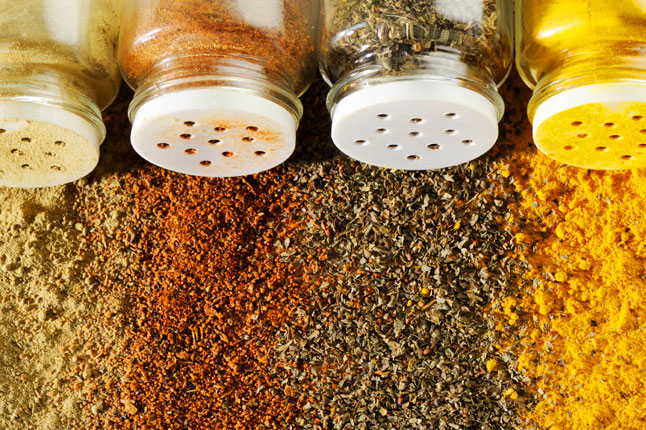
Along with adding flavor to your foods, spices and herbs can add health benefits as well. It’s easy for spices and herbs to become lonely little jars in the pantry that are overlooked. If your spices are being snubbed, this article may help reinvent their presence in your family’s meals and snacks.
The health benefits.
Herbs and spices have long been used for their medicinal value and recent research suggests that some spices and herbs may actually help with certain health conditions. For example, cinnamon has been shown to lower blood sugar levels and triglycerides in people with diabetes. Cayenne pepper may reduce cholesterol levels and turmeric may reduce inflammation in people with arthritis. Many spices and herbs are also loaded with protective antioxidants. You can make meals healthier by using spices and herbs when cooking by decreasing the amount of salt, butter and sugar that you use without having to sacrifice on flavor.
Benefits for your children.
Many parents are surprised to find out that spices and herbs can be a great source of vitamins, nutrients and antioxidants. This can be very helpful information especially if your little one is a picky eater. By adding a little flavor, you can also add healthy nutrition to the foods your family eats. Here is a brief list of some of the nutrients in a few common herbs and spices:
Basil: Magnesium and vitamin K
Cayenne Pepper: Vitamin A
Cilantro: Fiber, iron and vitamin K
Cinnamon: Fiber, calcium, vitamin K and iron
Dill: Iron and calcium
Paprika: Vitamin A
Parsley: Vitamin C, K and A
Rosemary: Fiber, iron and calcium
Thyme: Vitamin K
Turmeric: Iron, potassium and vitamin B6
Sage: Vitamin K
Make preparing foods interactive.
Preparing foods with your little one can be a great way to engage their sense of smell. For infants, take different bottles of spices that you have in your pantry and you and your little one can take turns smelling them. Try taking several exaggerated sniffs from the bottles and then put the bottle below their nose to smell. For toddlers, take out a small bit of the spice or herb and place it in from of them to smell and play with. Then let them try to choose which spice it is by letting them smell each bottle. This can be a fun way to introduce spices and herbs to your children.
Spices and herbs are also a great way to open your little one’s eyes to a variety of new flavors and tastes. Below are some simple recipes that include spices or herbs.
Try some of these pairings to create a new tasty treat for your little ones (or create your own):
- Corn with chives or sweet paprika
- Tomato with basil
- Avocado with cilantro
- Roasted potatoes with rosemary
- Green beans with garlic
- Cinnamon with apples, oatmeal or yogurt
- Nutmeg with butternut squash or sweet potatoes
- Garlic in tomato sauces
- Thyme with cooked veggies and soups
Preparation and storage tips.
- Spices and herbs are full of flavor, so a little can go a long way – start small and add more as needed.
- Spices can stay fresh for up to a year – try using permanent marker to write the date opened on each spice container so you’ll know when it is time to buy new ones.
- Don’t be afraid to experiment – try different spices with foods you already love for a new taste, or experiment with foods that are not so popular in your household to create a tasty treat everyone will enjoy.
- It is recommended that spices should be introduced after eight months in age. Try introducing one spice at a time in small amounts. Wait about five days before introducing a new spice to make sure that your baby does not have any allergic reactions.
*There are many other nutrients and vitamins in these spices, only a few are mentioned in this article.
What is the first spice or herb you plan to introduce to your little one? ***GIVEAWAY IS NOW CLOSED*** Leave a comment below and you will be entered for a chance to Designed to Nourish™ Divided Plates, Feeding Bowls, Long Spatula Spoons & Training Cup! TEN winners will be randomly selected from all comments (U.S. residents only). Check back on Tuesday, December 11th, when we will post the winners!
Here are the WINNERS: Jillian D, Christy, Jamie, Janice L, Alycia M, Mai, Mia G, Cyndi, Anteginni, and Chesca. If you are one of the winners, you will be contacted by e-mail. Thanks to everyone for commenting!
****
Jillian Dulac says:
December 1, 2012 at 2:11 am
cinnamon and dill!!
****
calichristy2 says:
December 1, 2012 at 2:14 am
My kids loved Avocado with cilantro
****
Jamie says:
December 1, 2012 at 3:22 am
I think I’m going to try cinnamon!
****
Janice Lawrence says:
December 1, 2012 at 4:09 am
Cinnamon is a favorite
****
Alycia M says:
December 1, 2012 at 4:01 am
Cinnamon and garlic. Separately, of course. :)
****
Mai says:
December 2, 2012 at 3:38 am
Basil. I love it in italian dish. It’s easy to grow in your yard too!
****
Mia G. says:
December 4, 2012 at 5:05 pm (Edit)
cinnamon, nutmeg, paprika – all good to start with
****
Cyndi says:
December 1, 2012 at 3:03 am
My LO has oatmeal with cinnamon and applesauce every night before bed.
****
Anteginni says:
December 1, 2012 at 2:31 am
Cinnamon and nutmeg
****
Chesca says:
December 1, 2012 at 5:23 am
We started with cinnamon & nutmeg in homemade applesauce. Exploring more spices now that our daughter’s older. Recently added cayenne pepper+thyme+paprika+1 bay leaf to brown rice…she loves it!
****
Stage
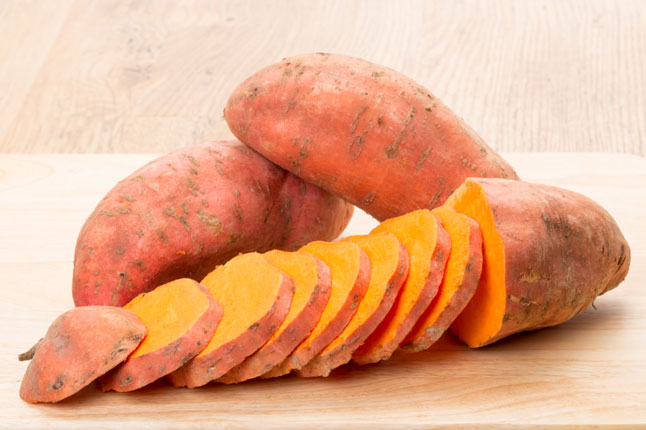
How sweet it is.
Recently making a comeback as an ultra-healthy ingredient in adult diets, the sweet potato has been loved by moms and babies for its tasteful benefits for decades. Sweet potatoes are loaded with vitamins A and E, beta carotene, potassium, calcium, fiber, and foliate. In fact, the Nutrition Action Health Letter recently rated 58 vegetables for overall nutritional value. The winner? The sweet potato – by far – with raw carrots a very distant second. Sweet potatoes serve as the perfect introduction to one of baby’s first solid foods. They are perfect for gumming and chewing and are easy on your little one’s stomach and digestive tract.
Easy to prepare, easy to eat.
Easy to prepare and delicious for your baby to eat, the possibilities for sweet potato baby food recipes are virtually endless. Start by thoroughly washing the sweet potatoes after poking holes in the vegetable. Most moms say that baking sweet potatoes is the best way to bring out their natural sweetness and delicious flavor, while also retaining the most nutrients. Be sure to leave the skin on while baking, then scoop out the “meat” at the end of the baking process. Another popular option is to peel the skin and cube the sweet potatoes, then boil them. You may also choose to blend the sweet potatoes into a pureed mixture. Sweet potatoes are the perfect accompanying dish or mixture with apples, squash, peaches, green beans, chicken, beef, pork and many other foods. You will discover that sweet potatoes are as versatile as they are tasty for your baby!
Interesting sweet potato facts.
Sweet potatoes are a member of the Convolvulaceae family of plants. The first references to sweet potatoes were recorded more than 5,000 years ago and the first Europeans to discover sweet potatoes were members of Columbus’s expedition party to the New World in 1492. Even with the word “potato” in its name, sweet potatoes are only a very distant relative to the common potato. America produces nearly two billion tons of sweet potatoes annually and North Carolina is the leading U.S. grower of the vegetable. Vardaman, Mississippi claims to be “The Sweet Potato Capital” of the world.
Try one of these sweet potato recipes the next time you’re looking for a new recipe for your family or little one.
Stage

Prepare this flavorful lentil dip and serve as a nutritious snack for the whole family! Lentils can offer huge benefits to your growing toddler. They are high in protein, folate, potassium and fiber. These healthy lentil ingredients help to build your baby’s immune system. Most pediatricians recommend first serving lentils when your child is between eight and 10 months old. For an overview of essential vitamins and minerals your child needs, check out our Nutrient Chart. Serve this lentil dip with pita bread and veggies. Cut pita into triangles and cut fresh veggies such as carrots, tomatoes, cucumbers and celery to serve along with the dip.
Depending on the toddler and adult size portions, this recipe will serve eight to ten.
Here is what you will need to make this recipe:

- 1/2 cup dried lentils
- 1/2 cup split peas
- 2 cup water
- 1 tbsp olive oil
- 1/2 cup chopped red onion
- 1 tbsp chopped garlic
- 1 tsp cumin
- 1/2 cup cilantro leaves
- 2 tbsp fresh lemon juice
- 1/4 cup whipped cream cheese
- 1 tbsp paprika

Cook lentils and split peas in large pot of boiling water until very tender, about 35 minutes. Drain and set aside.
Note* The lentils will absorb the water, so add water as needed if they start to stick while cooking.

Chop garlic.

Chop onion.

Heat 1 tbsp oil in large pan over medium heat. Add onion and garlic and sauté until onion is translucent, about 5 minutes. Add cumin and stir 1 minute.

Transfer mixture to blender or food processor. Add lentils and split peas, cilantro, lemon juice, paprika and 3 tablespoons water. Process until smooth.
Note* If the mixture is too dry, add water until the dip reaches desired consistency.

Transfer to medium bowl and add in whipped cream cheese.

Season to taste with salt and pepper and blend with immersion blender .

Serve immediately or cover and refrigerate. Can be prepared one day ahead. Bring to room temperature before serving.

Serve with pita bread and fresh cut veggies. Store lentil dip in the refrigerator for up to five days.
Stage
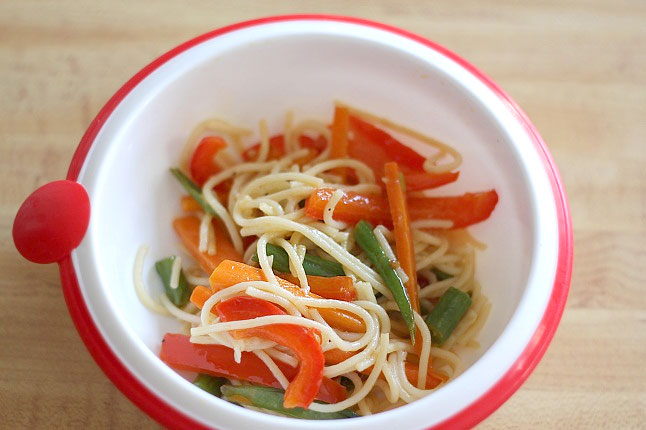
This simple family friendly pasta dish offers a hearty serving of veggies. Not only do I love the way this dish looks, but it is very easy to make! Combining multiple vegetables in a familiar pasta dish increases the likelihood for acceptance. The combination of carrots, red pepper and green beans in this recipe provides a wonderful source of vitamins and nutrients. Green beans are rich with antioxidants containing vitamin C and beta-carotene. They are low in calories and offer cardiovascular benefits that make them a heart healthy food. For an overview of essential vitamins and minerals your child needs, check out our Nutrient Chart.
Depending on the toddler and adult size portions, this recipe will serve five to seven.
Here is what you will need to make this recipe:

- 1/3 lbs fresh green beans, rinses and julienned
- 1/3 lbs carrots, peeled and julienned
- 1 red pepper, rinsed and julienned
- 3 tbsp butter
- 1 clove garlic, minced
- 3 tbsp parmesan cheese
- 1/3 package whole grain angel hair pasta or favorite pasta

Bring 2 quarts of water to a boil, add a pinch of salt to the water, if desired. Add noodles and cook for approximately eight minutes.

While the pasta cooks, peel and julienne the carrots.
Note* Although the vegetables will soften as they cook, chop them to the size you desire. Feel free to chop veggies as small as you would like for smaller children.

Wash red pepper and chop.

Wash and slice green beans.

Add one tablespoon of butter to the pan and sauté the julienned vegetables. Cook for three minutes.

Add the minced garlic and cook for another five minutes covered. Stir occasionally.

Have your little “hungry bear” help determine if the pasta is cooked by throwing a noodle against the wall. If it sticks its ready!
When the pasta is ready, drain and rinse.

Add the remaining two tablespoons of butter to the noodles and toss in the vegetables.

Finish with three tablespoons of grated Parmesan cheese.
Serve warm and Enjoy! You can try this recipe with chicken or sweet Italian chicken sausage if you desire.







